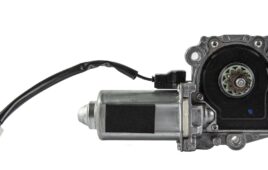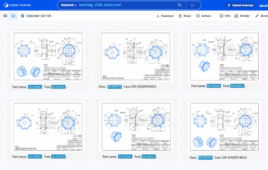The sound of air leaking from ageing pneumatic actuators—nails on a chalkboard for your bottom line. Sixty years ago, when Raaco International started manufacturing plastic drawers and mobile storage solutions in Nykøbing Falster, Denmark, pneumatic actuators were the technology of choice for injection molding and semi-automatic welding line automation. We’ve since learned that pneumatic cylinders are susceptible to pressure loss and leakage. This issue was precisely the case for the company recently. With an increased need for performance and rising energy costs, Raaco engineers sought out electric actuators from Thomson Industries.
 To help them get started, the Raaco engineering team contacted AVN Teknik, a Danish distributor, from which it had previously sourced industrial components. In reviewing specifications, AVN Teknik’s product specialist, Flemming Blauert, analyzed the problem and compared actuation alternatives.
To help them get started, the Raaco engineering team contacted AVN Teknik, a Danish distributor, from which it had previously sourced industrial components. In reviewing specifications, AVN Teknik’s product specialist, Flemming Blauert, analyzed the problem and compared actuation alternatives.
Raaco knew the actuators needed to be replaced, and were prepared to pay the cost—€360 per cylinder to upgrade to a newer pneumatic actuator, or €1,800 per cylinder for electromechanical actuators.
Using a sizing and calculation tool that factored in the required dimensions, torque, price of energy, ambient conditions, number of cycles and the duration of operation, the cost of operating a pneumatic cylinder was estimated at €739 per year, compared to €63 for the electromechanical cylinder. Pneumatic actuators consume more energy because each cylinder operation requires compressors to be operating 24/7. Also, the efficiency rate of electrical energy for pneumatic cylinders is only 15%, compared to 80% for electromechanical actuators.
But energy savings were only part of the value. Raaco chose to go with Thomson’s PC series. The PC series offered improvements in performance, productivity and maintenance. Raaco agreed to a preliminary test.
The test involved replacing the pneumatic cylinder on a trapezoidal welding machine used for fixing metal parts. Although it was not a direct production application, it was enough to demonstrate the speed, safety, loading and energy saving capabilities of electromechanical actuators.
The next step involved replacing the pneumatic actuator controlling the arm of a key injection molding application with the electromechanical actuator. The actuator’s function was to extend a robot arm down into the machine to grab a part from the mold, raise it up, move it sideways and drop it onto a conveyor belt for processing.
Expecting a certain amount of downtime for the transition, Raaco planned to hold factory production for up to two days; the actuators were up and working in a couple of hours.
Energy savings met expectations. Annual energy costs for operating this particular machine fell from €179 to €19. Along with the low energy consumption came a boost in performance. The electromechanical actuator proved to be 3x faster than its pneumatic predecessor, saving Raaco up to 1.2 sec for each cycle. For every two parts fetched and placed before, the system was now handling three. With an average machine running 2,880 cycles a day, this was a significant boost in productivity. Maintenance for the electromechanical actuators is a squirt of grease into the lubrication ports three times per year.
There is also a safety advantage. If the power fails while the system is in operation, the controlling pneumatic force goes away and the arm can drop rapidly, potentially harming anything that might be beneath it. This is not an issue for electromechanical actuators because they have an electric brake on the motor. If the power goes down, the actuator stays in position.
Convinced of the potential value across the rest of its production line, Raaco ordered electromechanical replacements for its pneumatic cylinders on the whole of its injection molding line during the next scheduled maintenance turnaround, and is evaluating applications throughout the rest of its plant.
Thomson Industries
www.thomsonlinear.com
Filed Under: Automotive, MOTION CONTROL, MORE INDUSTRIES, ELECTRONICS • ELECTRICAL





Tell Us What You Think!